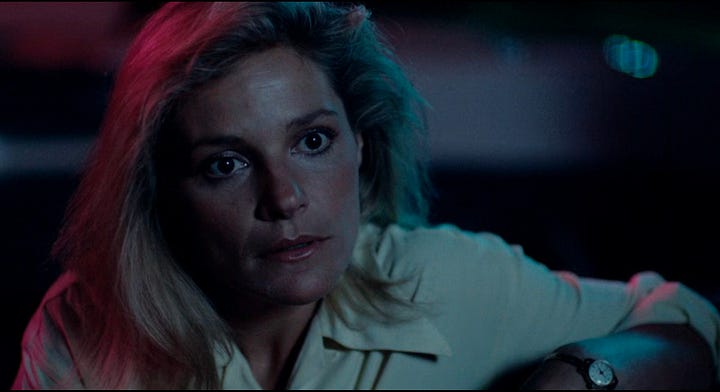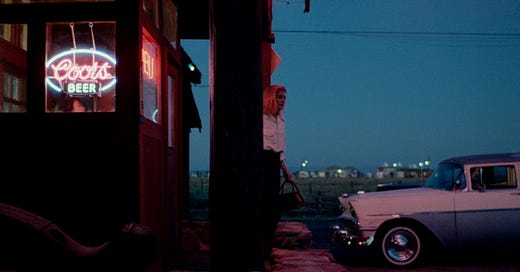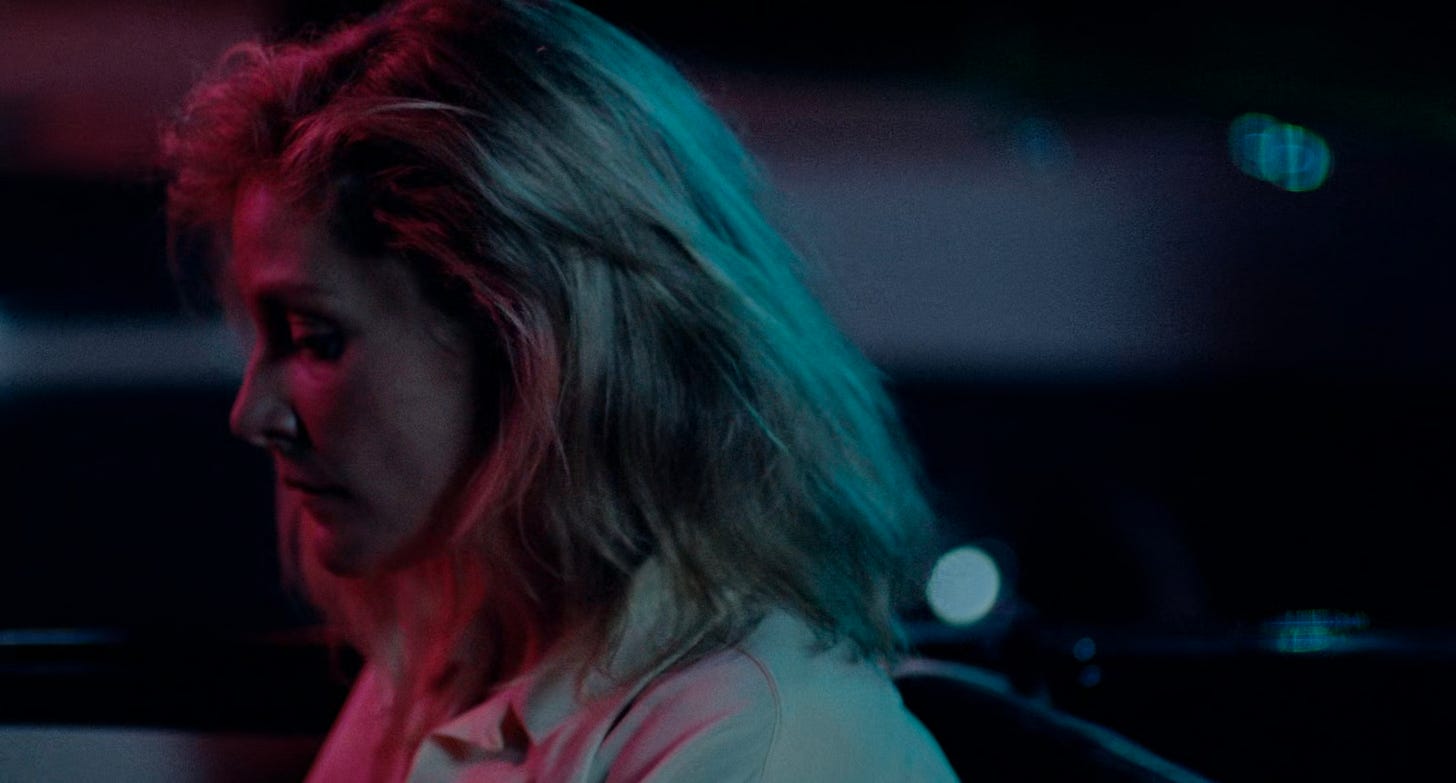Colour Theory: DESERT HEARTS
Recently we talked about colour theory in Blue Jean and Love Lies Bleeding — so guess a good opening question is “why do films made or set in the 80s, where queer women fight and/or make up in classic vehicles, use such strong colours?”
Sure, it could be selection bias (haaaaaaave you met Mel, author of all four posts?), but something about heightened use of colour in queer stories makes a lot of sense (eg Ponyboi). Perhaps it’s because of the melodrama (a historically super-saturated genre). But, that’s a thesis for another time.
Let’s talk about how Desert Hearts puts its spin on this trope.
The first scene comes to mind for ‘Cay and Vivian make up/out in a vehicle’ is this one. The final scene (which we’ve also talked about) actually fits the bill too; trains are vehicles.
But the scene today is quintessentially 80s, all neon and passion, its colours reflecting the two characters’ feelings and temperaments.
Establish Colours
After an encounter at the local dive bar shakes Vivian, she and Cay walk into a blue evening lit with red from the parking lot lights, accented with the blue and red neons glowing out from the bar.
Those colours dominate their following fight — part lovers quarrel, part yearning to be understood, part rage against the world.
Use Those Colours to Demonstrate Feels
Vivian's lighting is more 'mixed' and conflicted; Vivian doesn’t know herself or whether she can follow through.
Meanwhile Cay is sure of what she wants, and passionate about it; her lighting is predominantly red, with blues around and behind her.
When both face forward and away from each other as above (which Vivian only does fleetingly) both are painted in reds with blues behind, but Cay’s is about as predominantly red as the parking lot light can possibly motivate.
When they face each other, Cay stays rose-tinged as she argues from passion ("I act that way so the goddamn world won't change me!") while Vivian is washed in cooler blues as she pretends to be rational (“you can't insist everyone will see things your way . . . lower your voice!”)


Let the Colours Drive the Drama
When Cay momentarily gets out of the car, she's still painted in reds, while the background and Vivian's mostly-obscured face are darker blue.
Vivian briefly crosses through the red light getting out of the car, but quickly walks into dusk, where she stays icy blue . . .
until Cay jumps in the car and drives after her, slowly rolling alongside until she convinces Vivian to get in.
Takeaways
You don’t have to completely paint a character in one colour or another; let the motivation within the scene (in this case blue and red lights from the bar, and the blue night of the sky) lead the way, but you can still lean into one or the other — or like in this case, keep one character more a combination while the other is mostly consistently one colour to show who is more confused and who more certain.









